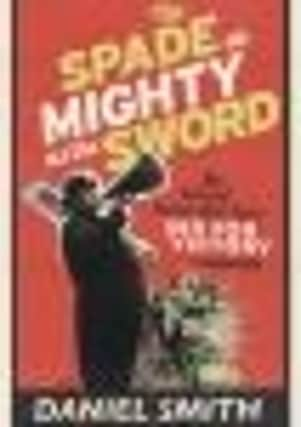Book review: The Spade as Mighty as the Sword by Daniel Smith


Dig for Victory, the propaganda campaign to persuade Britons to take up their garden tools and turn every square foot of fertile soil into a food-growing factory, was one of the boldest in the country’s history.
With German U-boats posing an increasing threat to merchant ships bringing in essential foodstuff, the drive to make Britain’s kitchens more self sufficient would become one of the most inspiring stories of the Second World War.
Advertisement
Hide AdAdvertisement
Hide AdIn The Spade as Mighty as the Sword, Daniel Smith takes us through the extraordinarily successful campaign to turn spades and forks into weapons of war which could be wielded by ordinary men, women and children on the home front.
By 1942, half the population were taking part, hours of sweat and toil had turned 140,000 acres of Britain into a vegetable plot and even the Royal Family had sacrificed their rose beds for growing onions.
It was estimated that about four million families were growing their own vegetables whether in their own gardens or on the grass verges in their streets.
One of the first people to back the Dig for Victory drive was young left-winger Michael Foot who declared in an editorial in the London Evening Standard in 1939 that ‘Britain must learn to dig’ and utilise every spare half acre from the Shetlands to the Scillies.
Advertisement
Hide AdAdvertisement
Hide AdThe response to his exhortations to ‘root out bulbs and plant potatoes’ and spend Sunday afternoons ‘with a hoe instead of in the hammock’ was patchy at first with many reluctant to tear up their precious gardens.
But a ground-breaking poster and advertising campaign built around the Dig for Victory slogan soon began to spur Britain into horticultural action.
The resonant image of a boot on a shovel as it slices into the soil was, Smith believes, one of the most famous advertising images produced by any British government.
Slowly but surely, people began pulling up their prized plants to sow potatoes, carrots and a vast array of vegetables.
Advertisement
Hide AdAdvertisement
Hide AdThe Women’s Institute bottled thousands of gallons of jam, pig-rearing syndicates were formed in major cities, all organic refuse was composted and horse manure commanded premium prices.
Demand for growing space led to railway embankments and even public parks becoming vegetable plots. At the peak of the campaign, a million tons of home-grown produce were harvested and the modern allotment movement was born.
One of the greatest contributions to the campaign came from the country’s first celebrity gardener, C.H.Middleton, whose belligerent BBC radio broadcasts told the nation to remember that ‘potatoes and beans are munitions of war as surely as are bullets and shells.’
Dig for Victory was a battle that everyone, including The Little Man with the Spade, could fight ... it involved no shooting or killing but was just as important as the well-documented military heroics performed on foreign shores.
(Aurum, hardback, £16.99)